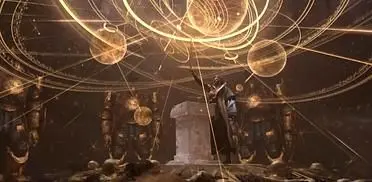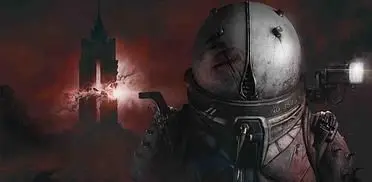I’m only 15 minutes into Daedalic and Irresponsible Games’ 1954 Alcatraz and I feel personally attached to husband and wife protagonist duo Christine and Joe Lyons, so much so I’m beginning to fill in the blanks with my own interpretations; something any good point and click adventure should aim to do. I’ve so far been promptly introduced to the heroes and their backstories, and I’ve been shown the system for which I’ll use to unearth the rest of their tale - in this case, in true Daedalic fashion, a typically straightforward one: left click to talk or grab; right click to look or inspect; mouse wheel to access the inventory. I’m now well invested in the couple’s relationship - a somewhat turbulent marriage - and their beatnik lifestyles, but I’m not just controlling the characters, I’m becoming them. From hereon in the rest is up to me as I uncover what I can from the cast I expect to meet; constantly filling in the narrative blanks, constantly living between the lines.
 |
| Christine’s sullen eyes convey the game’s ambitious opening |
It is therefore such a shame that 1954 Alcatraz fails to maintain the pace it sets itself so early on.
After being used as a scapegoat during a heist by unscrupulous North Beach gangster Mickey, getaway driver Joe takes the fall for the entire crime and is sent to Leavenworth county jail. Fueled by distain for his so-called partner, and a burning desire to reunite with his wife, he escapes only to be caught, incarcerated and condemned to an indefinite all-inclusive stay at the notorious Alcatraz prison. Christine then discovers the seized evidence was in fact counterfeit, and that Joe has stashed the real loot somewhere in the city. And so both characters have their work cut out for them: Christine must locate the hidden dough, whilst keeping Mickey and his thugs at bay; and Joe must escape The Rock.
The hand drawn cartoon-inspired San Francisco backdrops that set each scene in 1954 Alcatraz, particularly those depicting the prison grounds, are nothing short of stunning. Each area has clearly been well researched and each setting is a spectacle in its own right. An equally striking top down map screen of both North Beach and Alcatraz is also utilized to portray travel within the game. The game’s character models, on the other hand, don’t quite do these beautiful landscapes justice as animations often appear jarring and clumsy - and at times outright ugly - against the smooth surrounds.
The inclusion of over 20 idiosyncratic characters, however, offers just about enough to overlook any aesthetic issues, which is a generous number considering the story’s six hour runtime. From Hank, the old-timer serving 95 years who lets Joe in on his escape plan, to Gas Pipe, the burly broad shouldered jailhouse tough guy; from Bee, the gossiping nightclub photographer, to Dale, Christine’s one track minded smooth talking ex-boyfriend - each character has an intriguing story to tell, and one which you’ll often be required to uncover. Even Robert Stroud, the notorious “Birdman” of Alcatraz, makes an appearance.
 |
| The hand drawn backgrounds are stunning |
Playing as both Joe and Christine from the outset - switching activated via an inventory hotkey - means the player can progress each side of the story with relative flexibility. There are some situations where Christine must fulfill certain tasks on land before Joe can progress further - for example, early on in the game Joe is placed in solitary confinement, whereby Christine must forge release papers from the outside - but these instances tend to be well integrated within the context of the story. Certain story events create crossroads wherein the player can opt for a variety of paths, but none have any real bearing on the story’s final outcome. For example Christine can at one point choose to hop back in the sack with Dale - who’s going to find out, right? This simply adds another line of conversation in another meeting later on, as opposed to posing any real repercussions. Likewise, Joe can choose to use his wedding ring to overcome a puzzle in one of the jail’s workhouses. If he forgets to grab it on completion, this too gets picked up further down the line with an additional conversation option.
Even as a point and click adventure, 1954 Alcatraz is item-heavy, requiring the player to scour every area, before combining scores of bits and bobs and gadgets and gubbins in order to craft weapons, get that contraption working, or to make person ‘x’ part with item ‘y’. This is of course a good thing, and for the most part it works well, but a fair amount of tedious errand running and backing-and-forthing eventually creeps in, particularly towards the game’s end. A handy icon display system means pressing the space bar activates all interactable objects and surfaces making searching easier when stumped. Some puzzles do require moments of contemplation, but I largely found that missing an item was the main obstruction at any given turn, rather than any moments of genuinely bewildering problem solving.
 |
| The character models seem mismatched against the backdrops |
This tailing-off affliction also affects character dialogue. The dynamic, peculiar and intriguing conversation that floods the game’s early narratives unfortunately peters away as the game wears on, eventually becoming so banal that it’s hard to resist the urge to click through certain set pieces. I spoke with the game’s lead writer and designer Gene Mocsy at E3 last year where he excitedly ran through the characters with me, voicing each as he went, taking on their persona and playing one off another. The characters are of course still there now - they have never left - but this distinguished level of enthusiasm, particularly in the last third of the game, is sadly not.
Whilst 1954 Alcatraz does certain things very well, it too often lets itself down. Compared to Daedalic’s other offerings, here is a game which angles a much more mature approach, touching upon issues of love, lust, sexuality, relationships, individuality, and crime. Yet for all its ambition, it is exactly this which facilitates its downfall as it fails to live up to its potential. It is wholly unfair to compare games against one another, but I get the distinct feeling here that the point and click genre has been handled better elsewhere. Which is a shame considering that first surge of promise. It seems a tad ironic that with 1954 Alcatraz, all the items needed to make it work are there, it just can’t quite figure out how to put them all in place.
1954 ALCATRAZ VERDICT
Whilst 1954 Alcatraz does certain things very well, it too often lets itself down. Compared to Daedalic’s other offerings, here is a game which angles a much more mature approach, touching upon issues of love, lust, sexuality, relationships, individuality, and crime. Yet for all its ambition, it is exactly this which facilitates its downfall as it fails to live up to its potential. It is wholly unfair to compare games against one another, but I get the distinct feeling here that the point and click genre has been handled better elsewhere. Which is a shame considering that first surge of promise. It seems a tad ironic that with 1954 Alcatraz, all the items needed to make it work are there, it just can’t quite figure out how to put them all in place.
TOP GAME MOMENT
First discovering the score of quirky characters.




